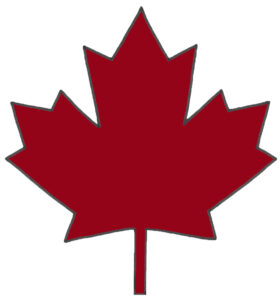Written on: December 1, 2014 by Mike Moffatt
 Since my article in the September issue of SPRAY, Canada is one step closer to adopting the Globally Harmonized System (GHS) by updating the Workplace Hazardous Materials Information System (WHMIS). However, there are still several steps to go until Canada catches up with the U.S. and has a GHS-based law.
Since my article in the September issue of SPRAY, Canada is one step closer to adopting the Globally Harmonized System (GHS) by updating the Workplace Hazardous Materials Information System (WHMIS). However, there are still several steps to go until Canada catches up with the U.S. and has a GHS-based law.
On Aug. 8, Health Canada reviewed the public feedback to the 2013 draft regulation and used it to issue an updated draft. There was a comment period, which ended on Sept. 8, 2014. We are not expecting any significant changes to this most recent draft when the final rule is released. The new draft regulation is available for download at:
http://gazette.gc.ca/rp-pr/p1/2014/2014-08-09/html/reg1-eng.php
The new rule will update the rules governing Material Safety Data Sheets (now simply called Safety Data Sheets [SDS]) and workplace chemical labels, but not the Consumer Chemicals & Containers Regulations, 2001 (CCCR, 2001) governing consumer chemicals in Canada. To avoid confusion, I will refer to old WHMIS as the existing rules and new WHMIS to be the rules based on GHS. The expected roll-out of new WHMIS is expected to look as follows:
Phase 1 – Transition (July 2015 to June 2016)
During this period, manufacturers and importers will convert their SDS and labels to the new WHMIS format. Importers and manufacturers can use SDS and labels in either old WHMIS or new WHMIS formats.
Phase 2 – Manufacturer & Importer Compliance (July 2016 to December 2016)
Importers and manufacturers must supply SDS and labels in only new WHMIS format. Distributors, however, can ship products in either format to allow for a sell-through of old stock and workplaces can use product labels and SDS in either format.
Phase 3 – Distributor Compliance (January 2017 to June 2017)
Distributors must now follow only new WHMIS, as well. Canadian workplaces will have until June 2017 to ensure that the labels and SDS of the products they use are new WHMIS compliant.
Note that these timelines are not set in stone, but rather our best estimates based on what we have heard from a number of industry groups and trade associations. 
There have been some concerns that the release of the final rule may be delayed due to the tragic events in Ottawa in October. In my view, this is unlikely. It is remarkable how quickly Parliament Hill went back to business, so it is not likely to cause any delays.
There is a significant amount of changed text in the 2014 draft rule relative to the 2013 draft rule, but the overall effects are minor. The largest change, in Nexreg’s view, is that under the 2014 draft rule, there are new requirements for “substances and mixtures that, upon contact with water, release a gaseous substance that is acutely toxic.” That is fairly small stuff, and not something that should impact too many companies.
More important are the items that were not changed between the 2013 and 2014 drafts, including the following:
Disharmony with the U.S.: There are still significant differences between this draft and the U.S. Hazcom 2012 rules, including the classification criteria for pyrophoric gases, simple asphyxiants and combustible dusts. Rules around the disclosure of carcinogenic ingredients also differ between the two countries. Because of these (and many more) differences, companies will not be able to simply use their U.S. labels and SDS in Canada due to differences in regulations. However, in almost all cases, it will be possible to create a set of documents that are jointly compliant with Canada and the U.S.
Label Design: The hatched WHMIS border will no longer be a requirement on workplace labels, nor will the statement about the availability of a Material Safety Data Sheet.
Flavors & Fragrances: The current Canadian exemption that allows for non-disclosure of flavors and fragrances will not be retained.
Renewal of Labels and SDS: The current requirement to update a Material Safety Data Sheet every three years will not be retained. However, companies must ensure that their SDS and labels remain accurate and must update these if new information becomes available about the composition of the mixture or the substances comprising it.
Exact Concentrations: Under the 2014 proposed rule, companies will not be able to use “WHMIS ranges” for the concentrations of components in their mixture. Rather, exact percentages must be used, unless there is a known variance in the raw material or manufacturing process.
Trade Secrets: In Canada, companies cannot self-declare that chemicals in a mixture—or their concentrations—are a trade-secret. Rather, they must apply to the Federal government to make such claims. Given the requirement for exact concentrations on SDS, we expect many companies will want to make trade secret claims. In order to do so, a company must register the chemical in question with Health Canada and obtain a HazardousMaterials Information Review Act (HMIRA) number.
Small Volume Containers: The 2014 draft rules have special provisions for reduced labeling requirements on containers of 100mL or smaller. These do not exist under the U.S. Hazcom 2012 regulation.
Products with Multiple Containers: Kits and other products with multiple containers (two-part epoxies are a classic example) require both the inner containers and the outer container (such as a box) and must have workplace labeling under the 2014 draft rules. This is not the case under Hazcom 2012.
We will keep watching the progress of GHS around the world. Do not be surprised to see jurisdictions that have already implemented the system update their laws to be closer to GHS Revision Five, including the U.S. When that happens, we will be sure to inform SPRAY readers.